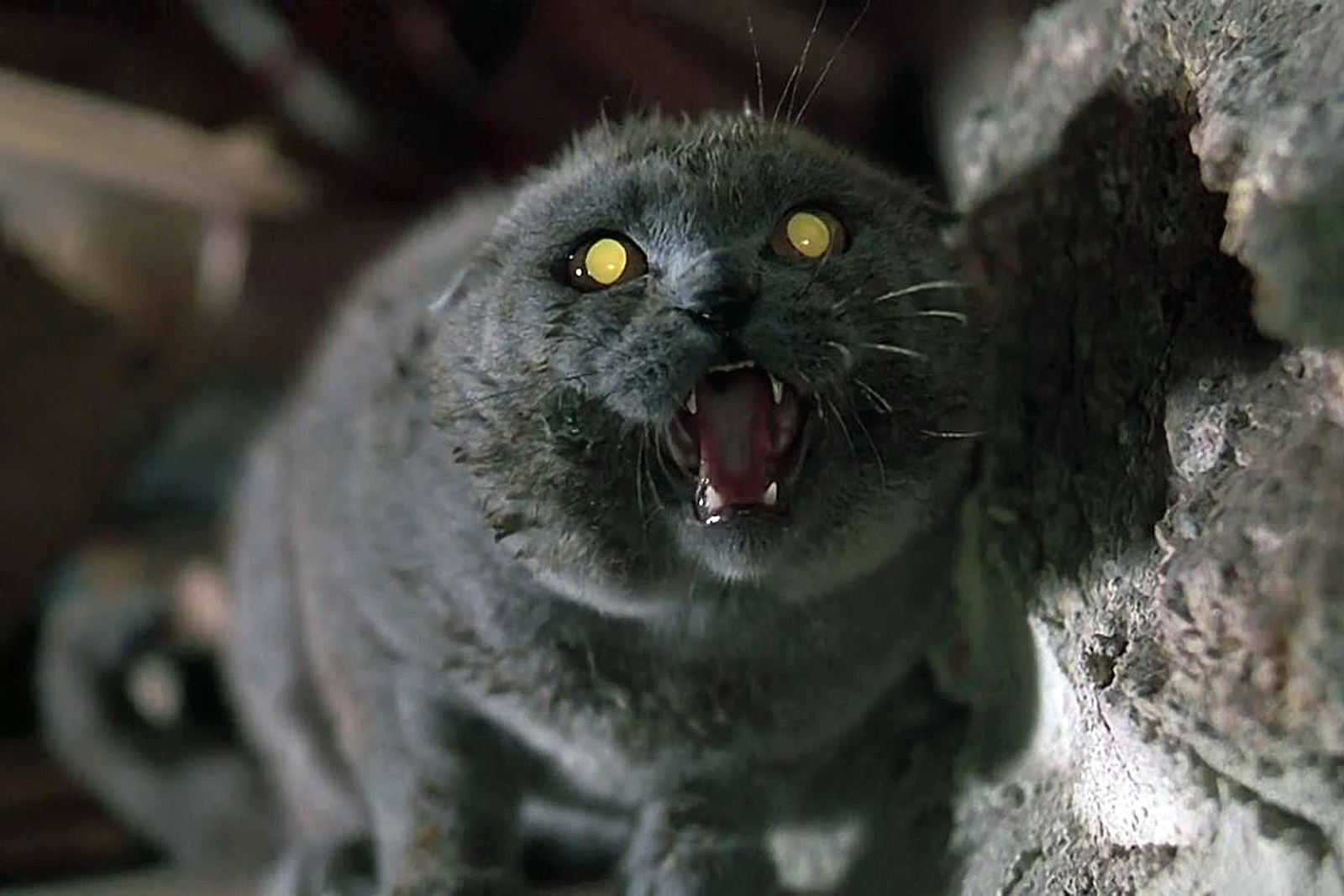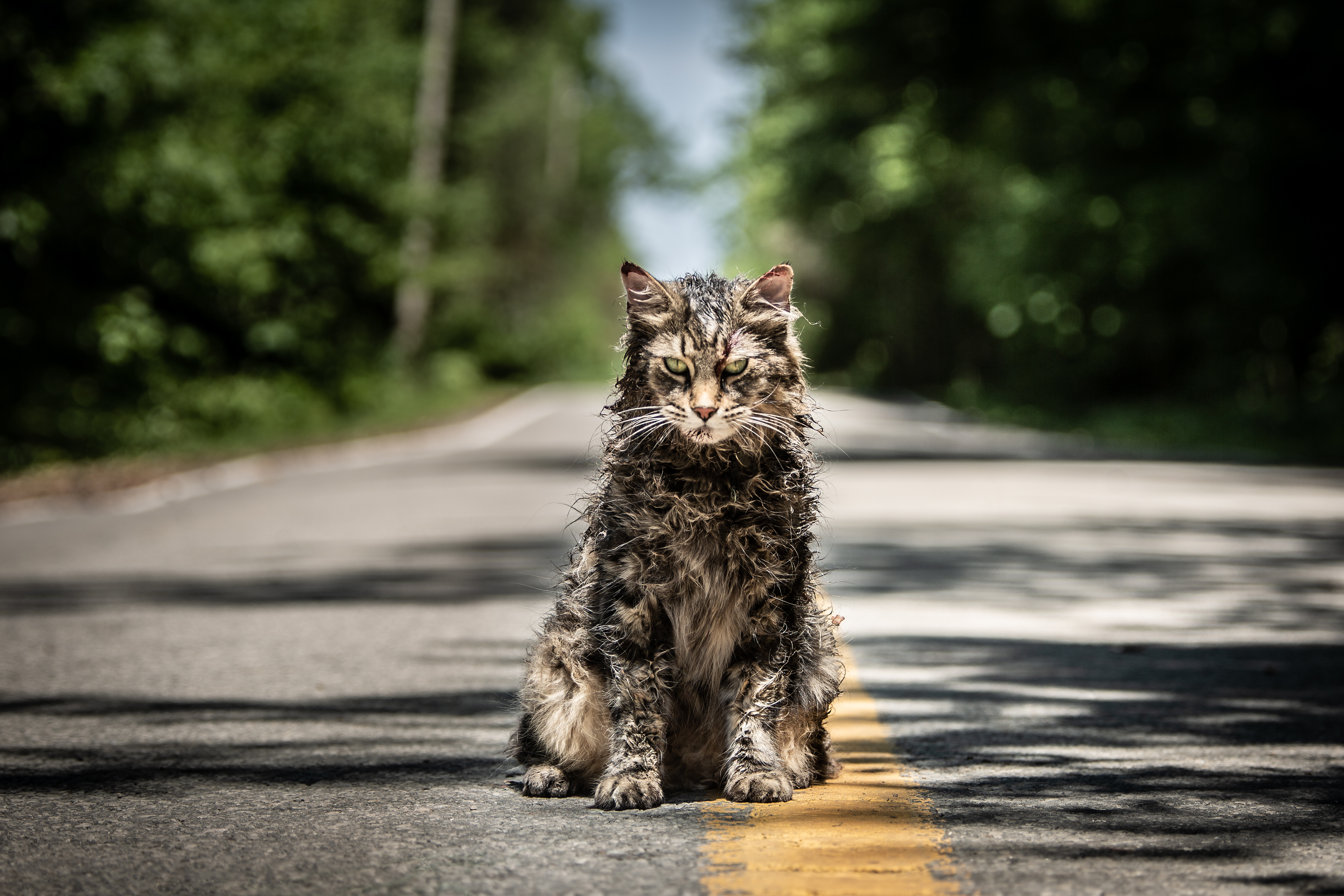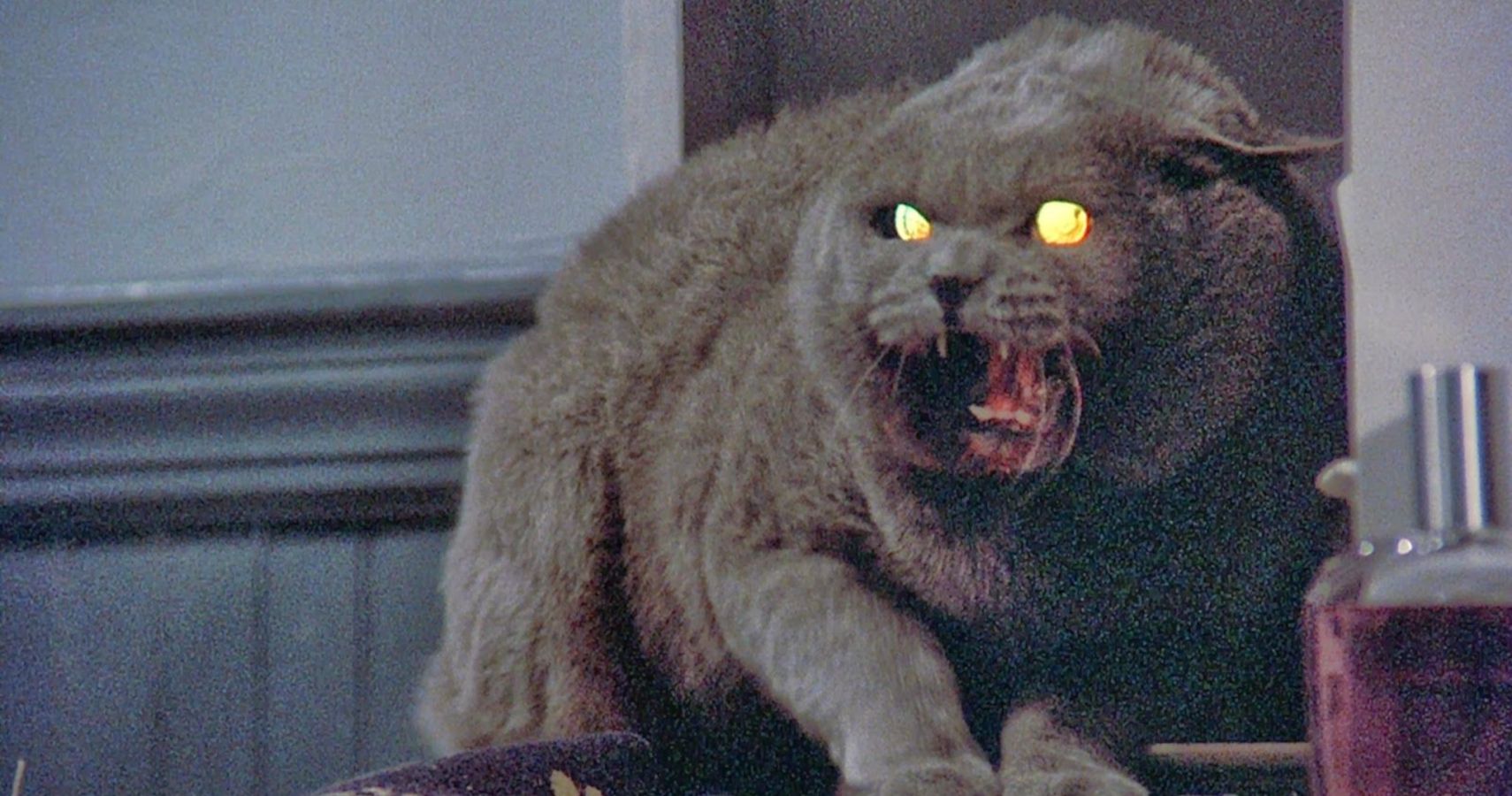"Church" In Pet Sematary: The Undead Feline's Story
Can a feline truly embody the essence of terror, defying the boundaries of life and death? Winston Churchill, affectionately known as Church, from Stephen King's "Pet Sematary," proves that even the most innocent of creatures can become the personification of our deepest fears.
The story of Church, the Creed family's beloved cat, begins with the mundane. He is a playful, kittenish companion to young Ellie, a fixture in their idyllic life. However, tragedy strikes when Church is struck by a truck, shattering the family's peace. This event sets the stage for the descent into the macabre that defines "Pet Sematary." Louis Creed, desperate to alleviate his daughter's grief, makes a fateful decision. He buries Church in the ancient burial ground, unaware of the horrors that await.
Church's resurrection is not a miracle, but a perversion of nature. He returns, not as the loving pet they once knew, but as a grotesque mockery of life. His eyes, once sparkling with mischief, now glare with malevolent intent. His movements, once graceful, are now unsettling and predatory. This transformation, vividly described in both the novel and its film adaptations, is the heart of the story's terror.
The character of Church is a masterclass in the art of horror. He isn't a slasher with a chainsaw or a creature with fangs; he is a symbol. He embodies the fear of loss, the pain of grief, and the unsettling truth that sometimes, death is a mercy. In the 1989 film adaptation, the filmmakers capitalized on Church's unsettling transformation through the use of menacing stares and aggressive hissing, creating a chilling atmosphere.
The impact of Church extends beyond the cat's physical presence. His return unravels the Creeds' lives, leading to a chain of devastating events. He becomes an agent of chaos, a harbinger of doom, a constant reminder of the fragility of life and the enduring power of darkness. In the 1989 film, and even more so in the 2019 remake, Church's influence spreads, highlighting the destructive potential of the resurrected.
The 2019 adaptation, like its predecessor, draws heavily from Stephen King's original work. The themes of death, loss, and the consequences of tampering with the natural order are central to the plot. Ellie, now, becomes a key figure in the story. The film's depiction of Church remains faithful to the source material: a terrifying embodiment of the uncanny valley, a creature that is both familiar and utterly alien. His presence serves as a catalyst for the story's escalating horror, a reminder of the dangers of defying mortality.
The choice of breed for Church is significant. In the 1989 film, Church is portrayed by a British Blue cat. The breed is known for its dignified appearance, but it becomes the embodiment of something unnatural. The film's director used the cat's looks as a source of evil that would creep people out. This choice is a testament to the power of visual storytelling, using familiar aesthetics to create a sense of unease.
The evolution of the character across adaptations is worth noting. In the novel and the 1989 film, Church's role as an antagonist is primarily tied to Gage Creed's arc. In the 2019 adaptation, the focus shifts, with Ellie taking center stage. Regardless of the narrative, Church remains a potent symbol of the story's underlying themes. His transformation is a visual representation of loss and grief, reflecting the deep wounds caused by death.
The novel "Pet Sematary" also touches on real-life inspiration in the story. The plot of the novel itself explores themes of life, death, and what lingers in between. The story's roots lie in King's own experiences, adding another layer of psychological depth to the narrative. This personal connection imbues the story with a sense of authenticity. The horror is grounded in the raw emotions of human loss, making Church's presence all the more disturbing.
The enduring appeal of "Pet Sematary" is a testament to the power of its core themes. The fear of death, the pain of loss, and the consequences of our actions resonate with audiences. Church, as a character, is instrumental in driving this resonance. The film adaptations, in their own ways, have successfully captured the essence of King's vision, offering chilling portrayals of this undead feline.
The name itself, "Winston Churchill," adds another layer of complexity. It is ironic as the name conjures associations of a historical figure with statesmanship and resilience, which is juxtaposed with the demonic entity he represents.
The choice of actors is also another factor. The cats that portray the character of Church are a key aspect of the film. Several Maine Coon cats were used to bring the character to life in the 2019 film adaptation. The actors, such as Leo, a Maine Coon crossbreed, had roles in scenes portraying the undead feline. The loss of Leo, shortly after the film's release, highlighted the emotional connection audiences form with these animal characters.
The horror genre owes much to "Pet Sematary." The film successfully creates an atmosphere of dread. The use of suspense, the chilling soundtrack, and the effective use of visual effects all contribute to its success. The fact that the story is a classic in horror films shows that the story is a success.
The influence of "Pet Sematary" extends beyond the world of horror. The novel and its adaptations have inspired countless works of art. It can be seen in the use of horror elements. From references in pop culture to fan art and merchandise, the story has permeated the cultural landscape.
The role of Church in the narrative highlights the book's central themes of grief and the dangers of tampering with death. Church's appearance is a symbol of the loss, showcasing the decay of life. This is how the novel succeeds in its genre.
The film adaptation is a faithful interpretation, but 2019's adaptation takes the story into a more bleak direction, making Church's role even more prominent in the story.
| Attribute | Details |
|---|---|
| Name | Winston Churchill (Also known as Church) |
| Species | Domestic Cat |
| Owner | Ellie Creed (Initially) |
| Cause of Death | Hit by a Truck |
| Resurrection | Through the power of the Pet Sematary |
| Nature of Resurrection | Undead, malevolent |
| Role in Story | Primary Antagonist |
| Adaptations | Stephen King's "Pet Sematary" (Novel), 1989 Film, 2019 Film |
| Portrayal in Film (1989) | British Blue Cat |
| Vocal Effects | Frank Welker |
| Themes Associated | Loss, Grief, Fear of Death, Consequences of tampering with the natural order |
| Real Life Inspiration | Stephen King's personal experiences of loss |
Source: Stephen King Official Website


